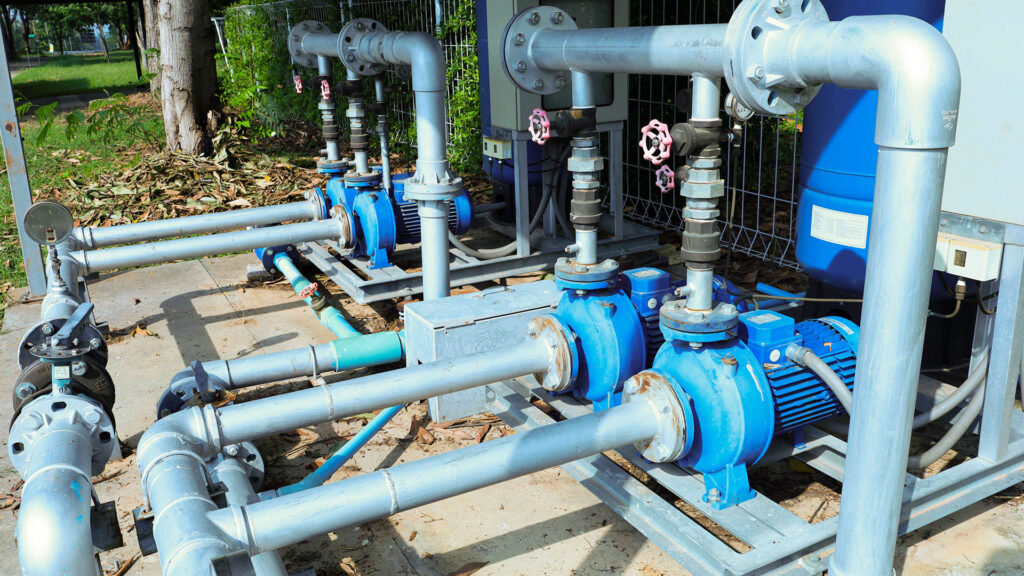Understanding Flood Risks in Urban Areas
As cities expand and populations grow, the risk of flooding in urban areas increases. Urbanization, coupled with unpredictable climate patterns, has heightened flood risks, making flood control infrastructure essential to safeguard both lives and property. Flood control pumps have become indispensable tools in managing water levels, preventing flood damage, and protecting urban areas from severe impacts. This article explores the critical role of flood management pumps in urban planning, their types, benefits, and how they integrate into larger flood management systems to build resilient cities.

Increasing Urbanization and Climate Change
With more people moving to cities, the demand for housing and infrastructure has led to the paving over of natural landscapes, which previously absorbed rainfall. As a result, urban areas are left with limited options for natural drainage, exacerbating flood risks. Furthermore, climate change has brought more frequent and intense storms, pushing city infrastructure to its limits. To meet these challenges, cities must adapt their flood management pumps and other flood mitigation measures to match heightened risks.
Common Flood Scenarios in Cities
Flooding in cities can arise from several sources: heavy rainfall, river overflows, storm surges, and even overwhelmed drainage systems. Coastal cities are especially vulnerable, facing threats from both rainfall and rising sea levels. During intense rainstorms, many cities see streets and residential areas flooded, creating hazardous conditions for residents.
Consequences of Flooding in Urban Settings
The impacts of urban flooding are widespread, affecting infrastructure, public safety, and local economies. Roads, bridges, power facilities, and sewage systems can sustain significant damage, leading to high repair costs and extended downtime. Flooding can also pose health hazards, contaminating drinking water and increasing the risk of diseases. Economically, flood events can result in productivity loss as businesses close and transportation is disrupted. Flood management pumps help minimize these disruptions by managing water accumulation in critical areas.

The Role of Flood Control Pumps in Urban Planning
Flood Pump as Key Defense Mechanisms
Flood control pumps are crucial for managing water levels and preventing water accumulation during storms. These flood drainage pumps act as a primary defense mechanism, swiftly moving excess water out of flood-prone areas to protect infrastructure and neighborhoods.
Integration with Other Flood Control Measures
Flood control pumps are often part of larger flood management systems, working alongside levees, floodwalls, and drainage channels. When strategically placed, they can help redirect water, control its flow, and support other structures, reducing pressure on local drainage systems.
Importance of Pump Placement in Urban Infrastructure
The placement of flood management pumps is as important as the pumps themselves. Urban planners carefully select locations, such as low-lying areas and sites near critical infrastructure, to maximize the pumps’ effectiveness. Proper placement can help prevent major flood incidents, especially in high-risk zones near rivers, coastal areas, and dense residential districts.
Types of Flood Control Pumps and Their Functions
High-Capacity Pumps
These pumps for flood control are essential for areas at high risk of flooding or where large volumes of water must be moved quickly. High-capacity pumps are generally fixed in flood-prone areas to handle large surges in water flow.
Portable vs. Fixed Flood drainage Pumps
Portable flood drainage pumps can be quickly deployed to various locations, making them suitable for emergencies or areas with sporadic flooding. Fixed pumps for flood control, on the other hand, are permanently installed in high-risk zones, ready to activate at the first sign of flooding.
Submersible Pumps for Low-Lying Areas
Designed to operate underwater, submersible flood drainage pumps are ideal for low-lying urban zones prone to water pooling. These pumps are effective at draining water from basements, tunnels, and other below-ground infrastructure that might otherwise be difficult to reach.
Key Benefits of Flood Control Pumps in Urban Safety
Reducing Water Accumulation During Storms
Flood management pumps help keep roads, public spaces, and residential areas dry by preventing water from accumulating during storms. This reduces hazards, making urban areas safer for residents.
Protecting Critical Infrastructure
By managing water levels, flood management pumps help protect critical facilities like hospitals, emergency services, and power stations. Ensuring these facilities remain operational during floods is vital for public safety and recovery efforts.
Minimizing Economic Impact
The use of flood management pumps can drastically reduce the economic fallout of flooding. By preventing significant property and infrastructure damage, cities save on repair costs and minimize downtime, helping businesses stay open and local economies recover more quickly.
Planning and Maintaining Flood Control Pumps
Pump Maintenance and Upgrades
For flood management pumps to remain effective, they require regular maintenance and periodic upgrades. Checking flood drainage pumps for functionality, repairing worn parts, and optimizing energy use is essential to keep pumps ready for use.
Collaborative Efforts Between City Planners and Flood Control Experts
Urban planning must incorporate expert insights into pump technology and placement to ensure optimal flood control. Collaborating with specialists in flood drainage pump systems and hydraulic engineering ensures that pump systems are designed and maintained effectively.
Emergency Preparedness and Pump Testing
Testing flood control pumps regularly and preparing them for emergencies is essential. Regular tests help detect issues before they become problems, ensuring pumps for flood situations are reliable when needed.
Future of Flood Control Pumps in Urban Planning
Adapting to Climate Change
As extreme weather becomes more frequent, urban planners are considering flood control pumps that can handle higher capacities and longer operation times. Climate-adaptive designs are essential to prepare cities for future flood risks.
Smart Flood Pump Systems
AI and IoT technology are enhancing pump efficiency, allowing for better flood predictions and quicker response times. Smart flood pump, connected to monitoring systems, can detect water levels and activate them automatically, ensuring rapid flood response.
Sustainable Urban Flood Control
To reduce environmental impact, eco-friendly flood control pumps are being integrated into urban flood systems. These pumps are energy-efficient and designed to work with renewable power sources, aligning flood control efforts with sustainability goals.
Conclusion
Flood control pumps are vital to urban resilience and safety, offering protection against the growing risks of urban flooding. By managing water levels and supporting infrastructure, flood control pumps help cities mitigate flood impacts, protect lives, and reduce economic losses. As cities continue to grow, incorporating effective flood control pumps into urban planning will be essential. Collaborative efforts among urban planners, engineers, and local governments can lead to more resilient urban landscapes, ready to face the challenges of climate change and ensure safer environments for future generations.
